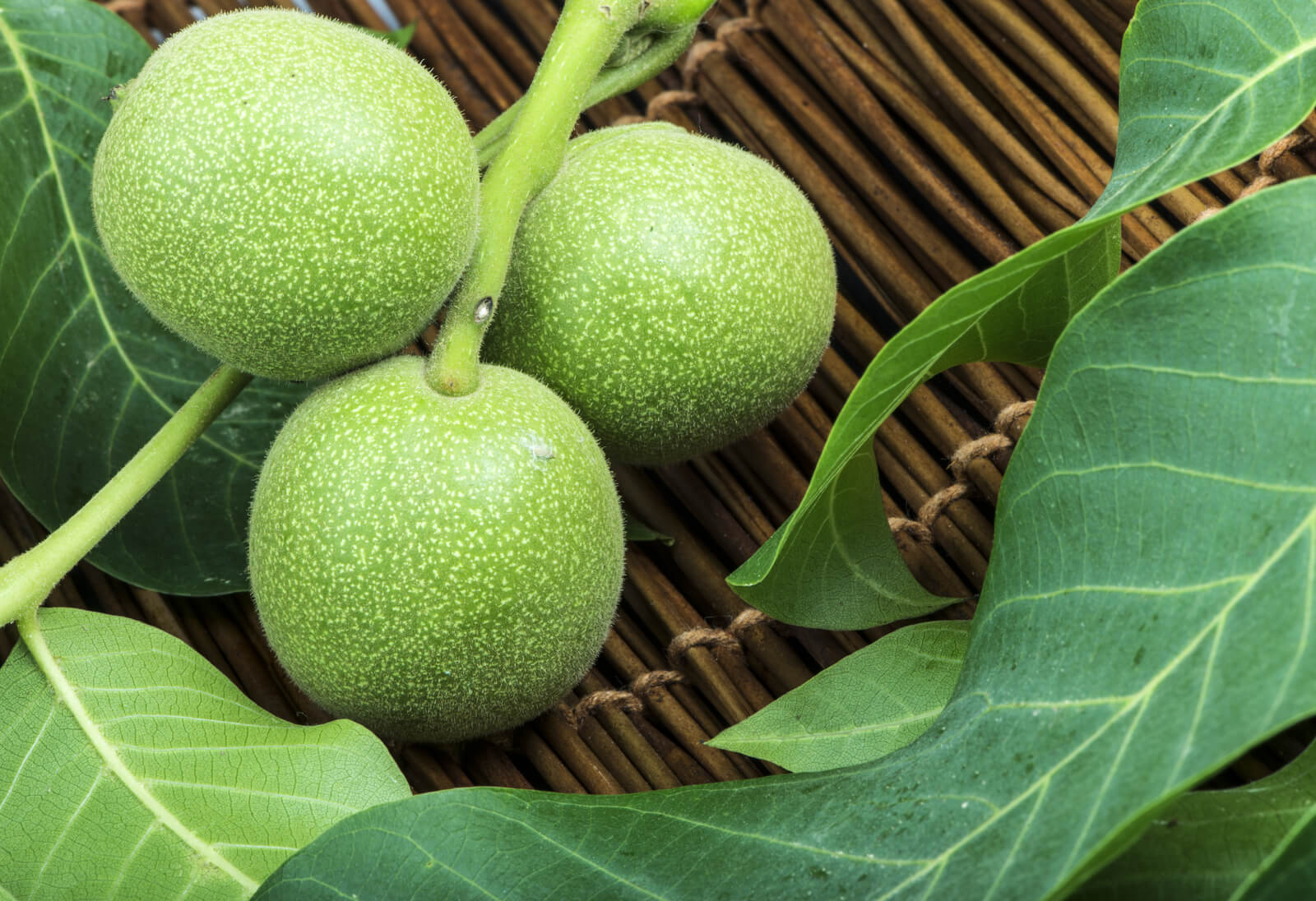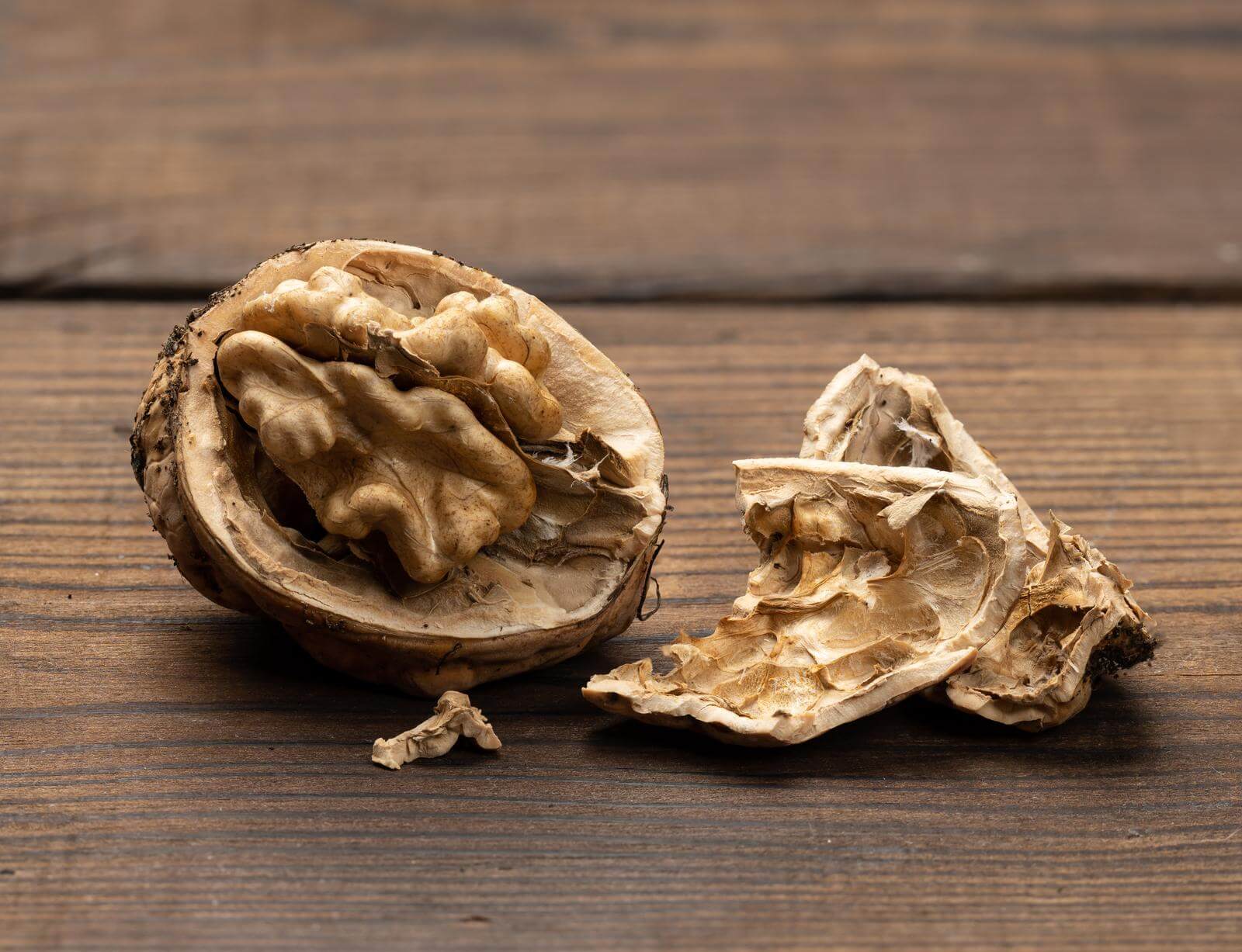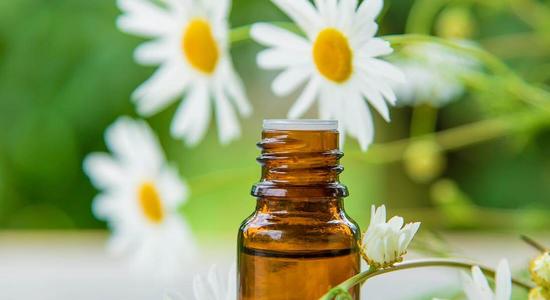See all "Herbs" Section Topics

Black walnut (Juglans nigra) trees are commonplace in much of the United States. They are prized for lumber, and also despised for hurting the development of other plants. Yet, they can effectively be used medicinally to treat yeast infections. In addition to black walnut, other walnut trees probably have similar medicinal ability to help cure a yeast infection. The English walnut (Juglans regia) has also been shown to be capable of treating yeast infections. The husks of walnuts are typically used as they contain high amounts of juglone and other phytochemicals; but, even the leaves and bark can be used to treat a yeast infection.
Dr. James Duke, the prominent herbal medicine expert, suggested using black walnut husks to treat a yeast infection. Dr. Duke, in his book The Green Pharmacy, recommended using a tincture of black walnut husks along with a few drops of tea tree oil, and tinctures of lavender flowers, pau d’arco, and valerian root. This is a very wise course of action, as the remedy involves mixing several different types of herbs. Dr. Duke states in his book, that combining herbal remedies may enhance the overall medicinal power of the remedy. There is a synergy created when you use multiple antifungal herbs to treat an infection.
Walnut Juglone Cures Candida

Juglone is a chemical produced by many walnut trees that can be very annoying to gardeners. This is due to juglone being toxic to many types of plants; making it difficult to cultivate certain plants anywhere near a walnut tree. Fortunately, juglone also is a great natural remedy for Candida infections (Ryu, Chung-Kyu, et al.; 2005)! The amount of juglone is particularly high for most walnut species in the green husk of the walnut’s fruit. This husk is known as the epicarp, and is the green outer shell of walnuts. You may know that these husks have a strong, unique smell to them; this is due to the various phytochemicals present in these shells. Of the Juglandaceae (walnut tree family) species, black walnut is known to have a significantly high amount of juglone. Yet, all walnut trees do produce juglone; so, even if you don’t have any black walnut trees—any old walnut should suffice!
Walnut tree leaves should also have juglone present in them. So if you have some essential oil of walnut leaves, this should also make a fine addition to your Candicidal herbal remedies. The amount of juglone present in walnut tree parts is probably, from greatest to least, as follows: green peel > leaves > bark. This assumption is derived from a study by Sun et al. (2006), who reported that the amounts of juglone in the species Juglans mandshurica. This species’ plant parts contained this order of juglone prevalence. It is likely to assume that black walnut and other related walnuts species will also have a similar order of juglone presence.
If you do not have any black walnut trees accessible to you, you likely do have some type of walnut product you can get. The easiest, is of course, just grabbing walnuts off the ground when it is the season to do so; however, this is not always possible. If you have a local herbalist, organic grocery store, or particular online shop you like, chances are you can find some walnut pills or extract there.
A study was published on the affects of juglone on Candida albicans in the Journal of Natural Remedies [9.1 (2009): 99-102]. The study found that juglone was nearly as effective against Candida albicans as the prescription drug nystatin. The study reported that 80 mcg / mL of juglone was able to successfully inhibit Candida albicans. Since there are likely going to be several milligrams of juglone in black walnut husks, using these husks should be very effective at controlling Candida yeast.
A 1/2 Day & Yeast is Gone!
Linda Allen suffered from yeast infections for years. Through researching natural medicine & Candida, she found an efficacious solution!
Linda is one expert you want on your side! Let her show you how to get rid of a superficial yeast infection in just 12 hours; AND, keep it gone!
A 60-day, 100% money back guarantee is provided.
Visit Official Site!Black Walnut and Candida Research

Another study, published in the Journal of Medicinal Plants Research [Vol. 2(5), pp. 098-110, May, 2008], used the leaves of black walnut to create aqueous/ethanol extracts to test against various microorganisms; among which was Candida albicans. The study found that extracts of the black walnut leaves were able to successfully inhibit the growth of Candida albicans.
An additional study, published in the European Journal of Clinical Microbiology & Infectious Diseases [29.1 (2010): 81-88], examined how extracts created from the bark of English walnut (Juglans regia) inhibited Candida strains. The study dissolved the English walnut bark in three different solvents: diluted acetone, ethyl acetate, and methanol.
The researchers took 10 grams of the ground bark and blended it with 100 mL of each solvent; then, after steeping, the liquid was dried to produce a solid extract. Concerning the species of Candida, A total of 48 different strains of Candida were used; which included 14 different species (C.albicans, C. glabrata, C. parapsilosis, C. dubliniensis, C.krusei, C. kefyr, C. sake, C. maritima, C. holmii, C. famata, C. lusitaniae, C. intermedia, C. atlantica, and C. guilliermondii).
The study found that all of the bark extracts successfully inhibited and killed all the various strains of Candida tested in the study. The minimum lethal concentrations of the English walnut bark extract (the smallest amount that would kill the yeast) were just a few milligrams—the amount did vary between strains. Fortunately, the researchers reported that Candida albicans was the most sensitive to the walnut bark extracts. Fidel, et al. (1999) report that 70% to 80% of all Candida infections are caused by Candida albicans. Consequently, walnuts should make an excellent choice for treating the vast majority of Candida problems.

Since the amount of juglone is probably lowest in the walnut tree’s bark (and this study used bark extracts), the efficacy of walnut husks would probably be more significant than the bark. And, since black walnut contains more juglone, using it instead of English walnut may also increase the potency of this natural treatment. But, this does show you that walnut bark extracts can work well as a yeast infection treatment. And, since black walnut is closely related to English walnut, either will probably work well for medicinal use.
Another study, published in Planta Medica [76.12 (2010): p.444], analyzed how extracts derived from black walnut husks fared as antifungal agents. The study examined 5 species of Candida and other fungal species as well. The study found that the extract from black walnut husks was a more effective killer than fluconazole of C. albicans, C. tropicalis, and C. krusei yeasts. The extracts of black walnut husks were also able to inhibit and kill all the fungal species tested in the study. Thus, this herb would be excellent to use on other fungal infections in addition to yeast infections.
Eliminate Bacterial Vaginosis & Vaginal Odor
Jennifer O’Brien is one prominent expert on BV that knows how to get rid of vaginal odor. BV is a common infection that you don’t have to put up with.
Jennifer will show you how to naturally eliminate vaginal odor in just 3 days.
A 60-day, 100% money back guarantee is provided.
Visit Official Site!Black Walnut Side Effects
Using black walnut husks externally should pose little to no danger for the majority of people. However, if you have sensitivity to tree nuts—such as an allergic condition—you should avoid using black walnut. The American Cancer Society recommends that you be careful using walnuts if you have a known allergic reaction to tree nuts—especially pecans. If you are unsure if you are allergic to black walnut, simply make a decoction of black walnut husks and apply a little to a patch of skin. If you see no adverse effects, you can try using it topically. If you are using prescription medications, you may want to check with your doctor before you ingest black walnut tinctures, essential oils, or any other therapeutic item derived from this tree. There may be some possible medication interactions that may occur when you ingest black walnut.
Clair Goodall: Author & Nature Lover
Clair Goodall is a bee-obsessed natural medicine convert from Minnesota. She is one expert you might want to know more about!
Clair will help you protect you and your family from toxic products and chemicals and help you discover solutions from nature.
Also, Clair’s book is backed by a 60-day, 100% money back guarantee
Visit Official Site!A Natural, 12 Hour Yeast Infection Cure

According to a research paper published in Clinical Microbiology Reviews [12.1 (1999): 80-96], Candida species are quite ubiquitous organisms. Candida are most frequently present in the mouth; and, live in 31% to 55% of healthy people. The species that causes approximately 70% to 80% of all Candida infections is C. albicans.
The Chinese Journal of Obstetrics and Gynecology [2011 Jul;46(7):496] reports there appears to be a correlation between intestinal Candida infections and vaginal yeast infections. And, this provides a clue, as to why yeast infections in general, can reoccur.
This study states, in 148 cases of vaginal candida infections, 33.1% of the women were infected in both the intestines and vaginal area. The recurrence rate of yeast infections, in women with simultaneous intestinal infection, was significantly higher than for women who did not have an intestinal infection. This study concluded that vaginal yeast infections are highly associated with simultaneous intestinal Candida infection.
As research appears to indicate, systemic Candida infections can and do happen. A more systemic Candida infection may primarily get a foothold in the intestines; and cause a wide array of problems. If your yeast infections keep happening, a systemic Candida problem may be why.
One woman who suffered from a systemic Candida infection, for about 12 years, was Linda Allen. The systemic Candida infection that attacked Linda caused a wide range of health problems in addition to yeast infections. Some of these problems, Linda describes in her own words in the following quote:
To be honest, it was hard to pinpoint exactly what was wrong: I wasn’t really sick, but I wasn’t really well either. I had listlessness, fatigue, brain fog, stomach ailments, unexplained rashes, skin infections, and so on. It seemed like every day brought a new challenge.
My energy was sapped and I felt exhausted, which affected my grades and put a big dent in my social life.
Linda Allen’s symptoms included an embarrassing vaginal discharge, severe itching, and burning sensations. Her infections were difficult to deal with, and Linda’s health problems cost her financially as well. Linda states these infections of Candida can become excruciating when they happen as frequently as a menstrual period.
Yet, Linda spent a great deal of time in research; and even questioned health professionals who were kind enough to share some time with her. Linda even tried an array of purported "cures." Although it took a while, eventually, Linda put together a natural treatment plan she hoped would solve her Candida situation.
After spending about a year refining her new approach, Linda tried her system on herself. It worked amazingly well. Linda even returned to a few medical doctors to get tested for the presence of infections. These tests revealed all indicators of infection had vanished! Linda was indeed well again, after such a long, difficult journey.
Linda has since published a book detailing how to copy her success. She also includes a 12 hour yeast infection cure that can get rid of a superficial (such as a genital yeast infection or oral thrush) yeast infection in about 12 hours.
Linda’s publisher protects those who get her book with a 60 day, 100% money back guarantee. Linda’s publisher, a subsidiary of the United States based firm Keynetics Incorporated, is a reputable digital retailer that has been around for a long time. They have great customer service, and make getting a full refund on Linda’s book quick and easy. If you’re not satisfied, you can quickly get all your money back.
If you would like to learn more about Linda’s journey to freedom from Candida, see reviews of others who tried her natural system, or find out more about her efficacious book; you can find more information at Linda Allen’s website.
Author: Mr. Nicholas Gross

Nick Gross is a natural medicine enthusiast who has been researching and writing about natural medicine since 2008. Nick is primarily a web developer but also researches and authors written and video content about natural health. Nick has a bachelor’s degree in Management Information Systems from the University of Northern Iowa.
Disclaimer
The information on this website is not a prescription for anyone. This information is for informational or educational purposes only, and is not a substitute for professional medical advice or consultations with healthcare professionals.
Affiliate Disclosure
Some of the links provided on this website are affiliate links. When a purchase is made through these links, Candida Hub earns money from commission. This helps to keep the website up and helpful to people for free. Thank you for any support!
Stay Up to Date
If you enjoyed this article, consider following / liking our Facebook page. This page is primarily utilized to alert followers of new articles that are put on Candida Hub. Candida related news is also discussed. While you are there, you can see what has been more recently added to Candida Hub.
SOURCES:
- http://extension.psu.edu/plants/gardening/fact-sheets/trees-shrubs/landscaping-and-gardening-around-walnuts-and-other-juglone-producing-plants — Penn State University’s Walnut fact sheet. By: Dr. James Sellmer
- http://www.forestry.ok.gov/Websites/forestry/Images/trees,blackwalnut.pdf — Black walnut information
- http://dx.doi.org/10.1016/j.ejmech.2004.12.004 — Ryu, Chung-Kyu, et al. "Synthesis and antifungal activity of 2/3-arylthio-and 2, 3-bis (arylthio)-5-hydroxy-/5-methoxy-1, 4-naphthoquinones." European journal of medicinal chemistry 40.5 (2005): 438-444. PubMed
- http://www.cifp.ac.cn/EN/abstract/abstract1503.shtml — Sun M, Song Z, Fang G (2006). Extraction and determination of total flavonoid and juglone in Juglans mandshurica Maxim. Chem Ind Forest Prod 26(2):93-95.
- http://notulaebotanicae.ro/index.php/nbha/article/view/5728 — COSMULESCU, Sina Niculina, et al. "Juglone content in leaf and green husk of five walnut (Juglans regia L.) cultivars." Notulae Botanicae Horti Agrobotanici Cluj-Napoca 39.1 (2011): 237-240.
- http://dx.doi.org/10.18311/jnr/2009/228 — Sinha, B. N., S. K. Bansal, and A. K. Pattnaik. "Phytochemical and Antimicrobial Activity of Extracts, Fractions and Betulin, 7-methyl Juglone Obtained from Diospyros paniculata." Journal of Natural Remedies 9.1 (2009): 99-102.
- http://www.researchgate.net/publication/266883646_Antimicrobial_activity_of_native_and_naturalized_plants_of_Minnesota_and_Wisconsin — Borchardt, Joy R., et al. "Antimicrobial activity of native and naturalized plants of Minnesota and Wisconsin." Journal of medicinal plants research 2.5 (2008): 98-110.
- http://dx.doi.org/10.1007/s10096-009-0824-3 — Noumi, E., et al. "Antifungal properties of Salvadora persica and Juglans regia L. extracts against oral Candida strains." European journal of clinical microbiology & infectious diseases 29.1 (2010): 81-88. PDF Available Here
- http://www.ncbi.nlm.nih.gov/pmc/articles/PMC88907/ — Fidel, Paul L., Jose A. Vazquez, and Jack D. Sobel. "Candida glabrata: review of epidemiology, pathogenesis, and clinical disease with comparison to C. albicans." Clinical microbiology reviews 12.1 (1999): 80-96. Full Text Available Here
- http://dx.doi.org/10.1055/s-0030-1264742 — Rodrigues, L., et al. "Antifungal activity in Juglans nigra green husks." Planta Medica 76.12 (2010): P444.
- http://ohioline.osu.edu/hyg-fact/1000/1148.html — black walnut toxcicity and side effects in humans
- Google Books — Duke, J. A. (1997). The green pharmacy: New discoveries in herbal remedies for common diseases and conditions from the world's foremost authority on healing herbs. Emmaus, Pa: Rodale Press.
- https://pubmed.ncbi.nlm.nih.gov/22041440/ -- Lin XL, Li Z, Zuo XL. "Study on the relationship between vaginal and intestinal candida in patients with vulvovaginal candidiasis." Chinese Journal of Obstetrics and Gynecology (Zhonghua fu chan ke za zhi). [2011 Jul;46(7):496].







